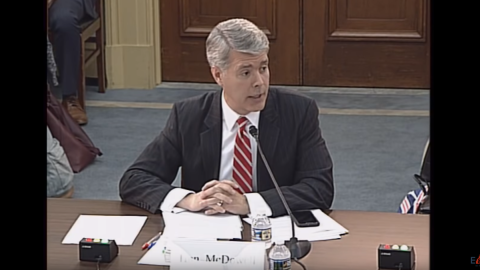On July 11, Robert McDowell testified before the U.S. House of Representatives Committee on Energy and Commerce Sucommittee. Following is the full text of his testimony:
Executive Summary
The story of the evolution of the Federal Communications Commission’s rules governing “customer proprietary network information,” or “CPNI,” dates back to 1980, before the break-up of the AT&T “Ma Bell” phone monopoly when analog voice calls traveled over circuit-switched copper wires. Marty Cooper’s cellular telephone invention was in its commercial infancy, and the Internet was an obscure computer-to-computer communications tool enjoyed by only a few thousand academics and government officials.
The FCC has modified its CPNI rules many times over the ensuing decades, with Congress last providing direction 22 years ago with the Telecommunications Act of 1996, specifically Section 222. The FCC subsequently adopted rules to implement Section 222 on several occasions. When I served as commissioner, in 2007 I worked on a bipartisan basis with my colleagues on a partial restructuring of our CPNI rules.
Since then, dramatic changes have occurred in the telecommunications, media and technology (“TMT”) marketplace. The maturation of the Internet ecosphere, especially the mobile Internet, has produced consumer benefits that were unimaginable 22 years ago. The mobile Net has also sparked trillions in American economic growth. While brilliant engineers and intrepid entrepreneurs invented new tools that have dramatically altered and improved our daily lives, business models have converged.
Section 222, however, has remained the same despite these new market realities. Only telecommunications carriers must live under this law governed by the FCC while the rest of the players in the dynamic Internet ecosphere operate under privacy standards administered by the Federal Trade Commission. This has created a legal and regulatory asymmetry in the diverse Internet market.
Only Congress has the authority to modernize and harmonize privacy and consumer protection laws to reflect the realities of the rapidly-changing 21st Century Internet marketplace.



















